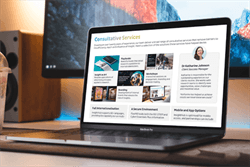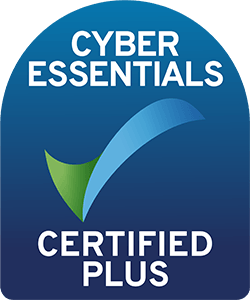The depth of the customer gap and the need for Customer Salience is only getting stronger across all industries. Just 48% of managers say they use customer data or insight when making decisions. Less than 15% of executives believe their organisations are achieving customer-centric goals. The way in which teams, managers and leaders make decisions needs to be better understood, and better influenced to align with customer needs. Here are five steps that we must take to achieve this goal:
1. Overcoming Bad Habits
There are a number of ways that we can work to better this understanding, and improve the way that customer insight is leveraged as a key pillar of decision making across businesses. There are also a number of ways to undermine this process before it starts:
Bad Habit 1: Gatekeeping your insight processes.
Approaching stakeholders with ‘here is your insight, don’t ask us how we got it’ is an absolute no. Why would teams change their approach and processes based on insights and data they haven’t been involved with?
Bad Habit 2: Involving the stakeholder far too late, with a dull video-call recap of the methodology (nobody is listening).
A ten-minute talk at the start of a late afternoon debrief about the methodology and framework used to collect data is not involving the stakeholder in research. It is, however, a great way to see cameras start to switch off on video calls as people are utterly drained of any enthusiasm. They’re now going to wait until you give them the data, and they’re going to ignore half of it.
Bad Habit 3: Trying to position yourself, the researcher/research team, as the main character.
There are budgets, promotions and politics to think about, yes. But the research team and their hard work, clever framework (etc.) are not the main character of this process. The customer and the business’ decisions are.
If you’re outsourcing your research so you’re not actually doing the design, analysis or reporting yourself, is it really best practice to make sure that everything goes through you (and only you) both ways, so that key conversations between the researcher designing the research and the stakeholder making decisions based on the research are at one degree of slightly awkward separation?
The researcher/research team is there to connect the business with the customer and help the business to make better decisions. The ‘seat at the table’ mentality is outdated and could actually serve to undermine your efforts.
| Tweet This | |
| The need for Customer Salience is growing across businesses in all industries, but there are some common challenges to overcome. |
2. Shifting Ownership: From Research Teams to Stakeholders
So then - what? If we as researchers manage to stop gatekeeping our processes, and stop making stakeholders listen to a dull ten-minute exposition about ‘what we did and why we are, therefore, very valuable, please talk to us’, what should we be doing to help better link insight with decision making?
We know that we need to be challenging the status quo regarding Customer Salience and insights, pushing the business to question its assumptions and take the right steps to correct them. We know that our job is to keep customer understanding at the forefront of business strategy.
Too often, research is seen as the responsibility of a single department, with stakeholders only engaging during final presentations. And we all know that engagement of this type is often patchy and limited. Real impact, real engagement, happens when stakeholders are involved throughout the process. Stakeholders should be active participants in research processes, not passive.
Facilitate direct stakeholder participation throughout the research. The stakeholder/decision maker knows their job better than you do. Do them the respect of involving them in conversations.
And I do mean actual conversations. Just taking in a research brief, then sending through designs for review via email, and starting a frustrating cycle of builds/edits/redrafts is not the best way to ensure stakeholders are engaged with the process and therefore ultimately engaged with the outputs. Book a room or get on a call and ideate, using your skillset as a researcher and the stakeholder’s skillset and knowledge in their own role, and leave that session with a design you’ve all agreed on.
Involve the stakeholder throughout the fieldwork where possible. At the bare minimum, give them the opportunity for regular check-ins so you can not only update them on the data, but also your expert view on what that data means. And if possible, get the stakeholder involved in the research activities themselves: Can they be involved in focus groups? Co-creation workshops? Can they record a short video for the participants that you can put into a survey or qual task, to give the respondents a true sense that their responses will be impactful?
Whether the stakeholder has time to be involved more actively, or just has the time for a couple of key calls/meetings, we need to do whatever we can to avoid the situation where it’s at all necessary to do the soul-destroying ‘this is what we did’ debrief recap in a debrief… The stakeholders should already know by that point and be invested. Shared ownership and urgency are key.
This leads well into the next key approach: Creating regular research touchpoints outside of ‘one-off’ projects.
3. Creating Regular Research Touchpoints
Inconsistent or one-off research projects contribute to disjointed customer understanding. To maintain Customer Salience, research needs to be part of the business rhythm.
Establishing a research calendar, for example, can be an effective way to establish research/insight in the way a business operates day-to-day. Collaborating with stakeholders to set up regular customer feedback loops, such as monthly pulse surveys, is an effective way to keep stakeholders informed, particularly if you’ve established an open dialogue relationship and avoided gatekeeping and main character complexes.
However, stakeholders are not going to engage with customer feedback and insight if they don’t have any skin in the game. This is where getting the stakeholder more actively involved in the processes of research and insight is a must. Is there a stakeholder team you haven’t worked with in a while? Reach out, and see if they have any questions. Is there any self-serve aspect to the research tech that you’re using? Encourage usage and logins.
If you have a resource where you collect data and insight, where the customer voice is active and represented, and key stakeholders around the business are not able, willing and eager to log in and access this resource, then your research function is failing the business. This comes back again to gatekeeping; if your research team is the only team able to access insights, and holds the key unless they’re actively forced to open the door, you’re not going to establish a constructive feedback loop.
That ‘willing and eager’ point is another key consideration. Are your insights interesting? Using video and visualisations, or even something more elaborate such as customer postcards and Insight as Art, can be a compelling ‘hook’ to bring in engagement and interest.
4. Keeping Up to Date: Fighting Complacency
One of the biggest threats to Customer Salience is the belief that the business already “knows” the customer. Complacency stifles innovation and blindsides decision-makers to emerging trends.
Introducing fresh perspectives with research such as social listening and competitor analysis can be a good way to bring in more interest from around the business. A problem here, of course, is budget - you need to do research and activities that stakeholder teams are not ‘naturally’ seeking out, so you need to be proactive, but how do you do this without that up-front investment from other teams?
Other approaches such as a clear, ongoing research agenda aligned with business objectives, and longitudinal research to continually challenge assumptions and beliefs, are also great ways to keep producing up-to-date, informative insights that help promote the use of customer insights when making business decisions.
5. Building Understanding Before Taking Action
Focus on building insight journeys. Collaboration is at the heart of effective research. When stakeholders participate directly, their decisions are not only more informed but more customer-centric.
A huge part of this is how vital it is for stakeholders to understand that research isn’t ‘questions and answers’... it’s about understanding.
Quick fixes - testing, data, action - often lead to poor decisions, where well-founded understanding can help drive strategic success. A focus on cumulative learning, and educating a view of research as a tool for building knowledge rather than tied to isolated decisions, is really important here.
Again, though, this does not come without finding effective ways to engage, and possibly even ‘convert’, stakeholders. And this is not ever going to happen if research is siloed and gate-kept by a research team.
Building an approach of longer-term cumulative learning does not happen overnight, and the inertia of a large organisation can compound this exponentially. This means that it’s vital to take better advantage of the opportunities you currently get with stakeholders and excite stakeholders about being more engaged and involved with research processes whenever you work with them on a project.
| Tweet This | |
| Customer Salience is more than a buzzword - it's a strategy towards success and it can become a business reality in just a few steps. |
Challenging the Status Quo for Better Outcomes
Reorienting a business to be customer-centric in its decisions means making customer insight something owned by and engaged with by the business as a whole.
Shifting ownership, creating regular research touchpoints, fighting complacency and focusing on building understanding over knee-jerk reactions is a menu for success. The stats that we surfaced at the start of this blog are genuinely worrying, and the continual downturn in customer satisfaction scores across UK businesses is one sign of this problem in action.
Customer Salience is more than a buzzword - it needs to be a business reality. Research teams fighting for a ‘seat at the table’ by gatekeeping research processes and fighting to be seen by the business rather than as part of the business are shooting themselves in the foot. By driving stakeholder engagement, fostering collaboration, and embedding research into the business rhythm, businesses can be empowered to build stronger, customer-centric strategies. When stakeholders own the insight process, they make more informed decisions, innovate with confidence, and, ultimately, drive sustainable business growth.


















